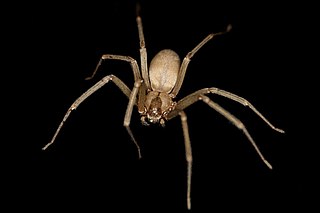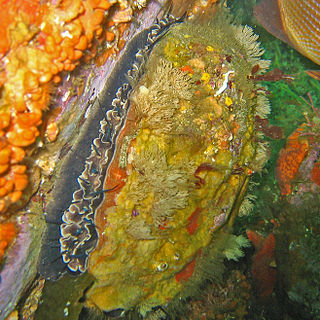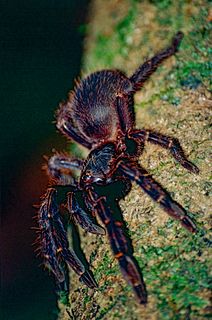
The brown recluse, Loxosceles reclusa, Sicariidae is a recluse spider with a necrotic venom. Similar to other recluse spider bites, their bite sometimes requires medical attention. The brown recluse is one of three spiders with medically significant venom in North America.

The recluse spiders, also known as brown spiders, fiddle-backs, violin spiders, and reapers, is a genus of spiders that was first described by R. T. Lowe in 1832. They are venomous spiders known for their bite, which sometimes produces a characteristic set of symptoms known as loxoscelism.

The Mediterraneanshort-toed lark is a small passerine bird found in and around the Mediterranean Basin. It is a common bird with a very wide range from Canary Islands north to the Iberian Peninsula and east throughout North Africa to parts of the Middle East. The International Union for Conservation of Nature has rated its conservation status as being of "least concern".

The reddish egret is a medium-sized heron. It is a resident breeder in Central America, The Bahamas, the Caribbean, the Gulf Coast of the United States, and Mexico. There is post-breeding dispersal to well north of the nesting range. In the past, this bird was a victim of the plume trade.

Loxosceles rufescens, the Mediterranean recluse spider, originated in the Mediterranean region as its name implies, but is now found worldwide.

The chestnut-backed chickadee is a small passerine bird in the tit family, Paridae.
Acanthopelma is a genus of tarantulas that was first described by Frederick Octavius Pickard-Cambridge in 1897. As of December 2019 it contains two species, found in Central America and South America: A. beccarii and A. rufescens.

The long-billed crombec or Cape crombec is an African warbler.

The rufous piha is a species of bird in the family Cotingidae. It is found in Belize, Colombia, Costa Rica, Ecuador, Guatemala, Honduras, Mexico, Nicaragua, and Panama. Its natural habitat is subtropical or tropical moist lowland forests.

The rufous elephant shrew, rufous sengi or East African long-eared elephant-shrew is a species of elephant shrew in the family Macroscelididae. Found in Ethiopia, Kenya, Somalia, South Sudan, Tanzania and Uganda, its natural habitats are dry savanna and subtropical or tropical dry shrubland.

The Afghan pika is a species of small mammal in the pika family, Ochotonidae. It is found in Afghanistan, Iran, Pakistan and Turkmenistan and the IUCN lists it as being of "least concern".

Rhynchotus is a genus of birds in the tinamou family. This genus comprises two members of this South American family.

Haliotis rufescens is a species of very large edible sea snail in the family Haliotidae, the abalones, ormer shells or paua. It is distributed from British Columbia, Canada, to Baja California, Mexico. It is most common in the southern half of its range.
Acanthopelma beccarii is a species of spider belonging to the family Theraphosidae (tarantulas). It is endemic to Guyana in northern South America.

Ephebopus is a genus of northeastern South American tarantulas that was first described by Eugène Louis Simon in 1892. Its relation to other tarantulas is one of the most uncertain in the family, and it has been frequently moved around and has been placed in each of the eight subfamilies at least once.
The Ischnocolinae are a problematic subfamily of tarantulas. In 1892, Eugène Simon based the group, which he noted was only weakly homogeneous, on the presence of divided tarsal scopulae. This feature was later considered to be plesiomorphic, and both morphological and molecular phylogenetic studies have shown that, as traditionally circumscribed, the subfamily is not monophyletic. A much more narrowly defined Ischnocolinae sensu stricto was proposed in 2014. One of the authors of that proposal subsequently said that no further taxonomic changes should be considered until there had been a more comprehensive sampling of the subfamily. As of January 2021, the status of the Ischnocolinae remains unresolved.
Reichlingia is a monotypic genus of Central American tarantulas containing the single species, Reichlingia annae. The genus was first described in 2001, and has only been found in Belize.

Ephebopus rufescens, known as the red skeleton tarantula, is a species of tarantula. It is found in French Guiana and Brazil.
Sparianthina is a genus of huntsman spiders that was first described by Nathan Banks in 1929.

Harmonicon is a genus of South American curtain web spiders that was first described by F. O. Pickard-Cambridge in 1896.













